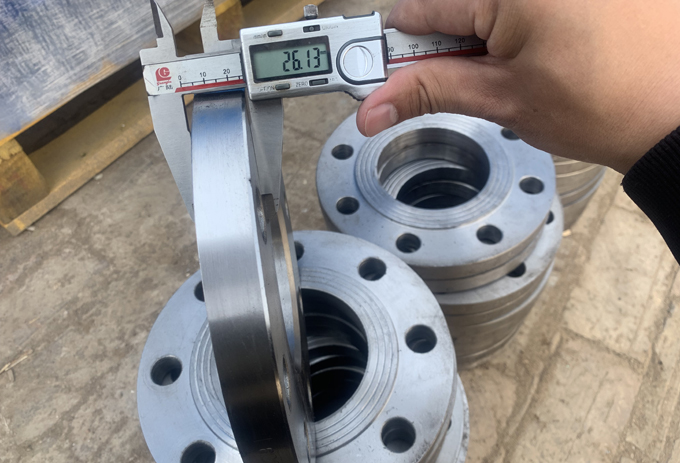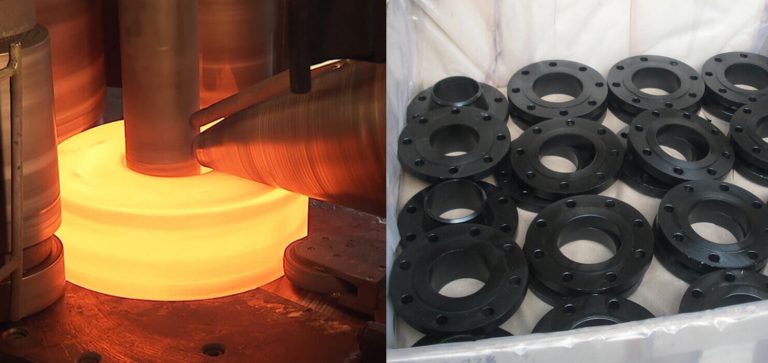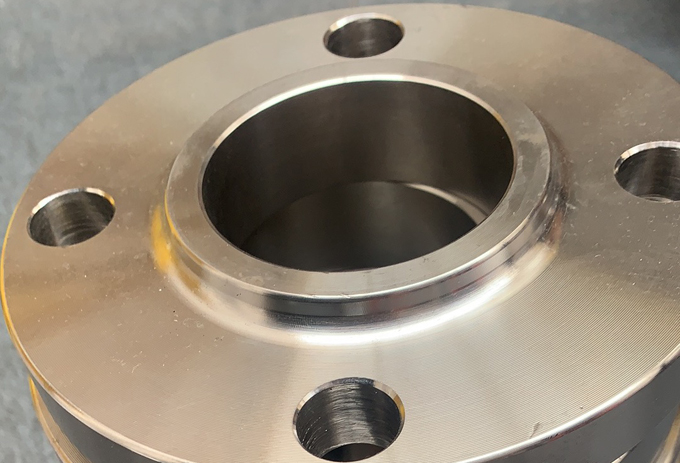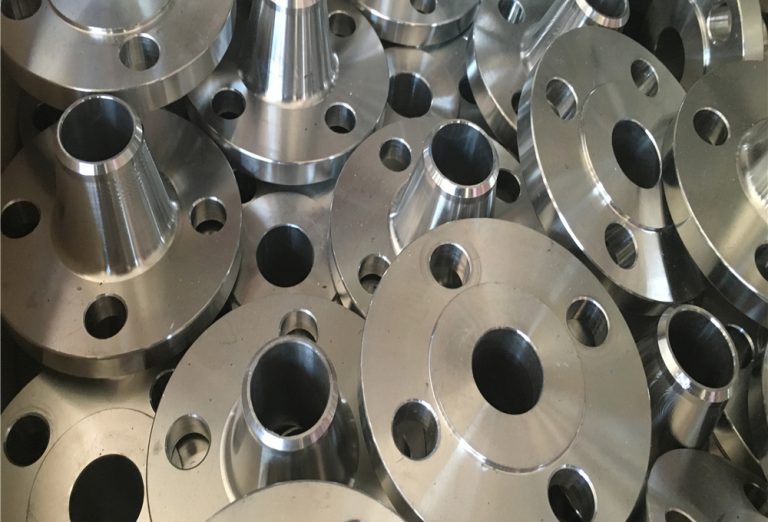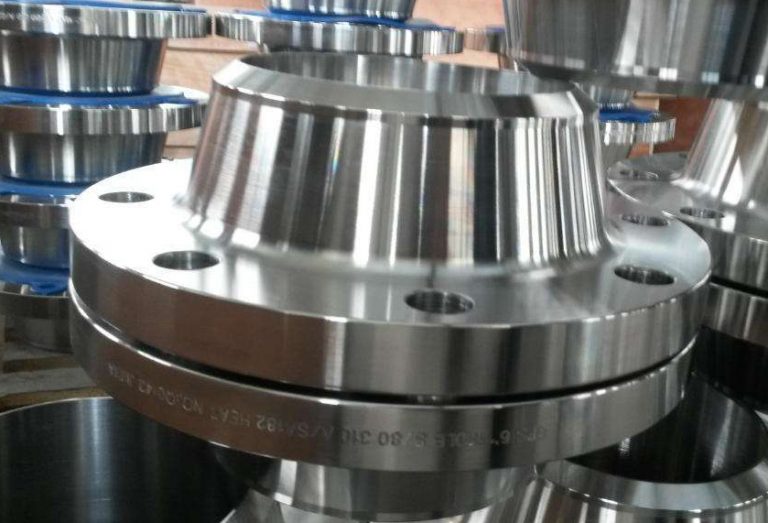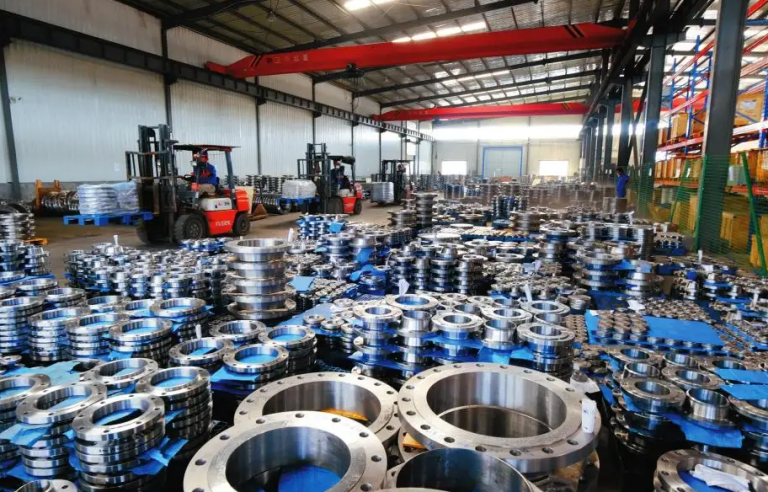I. Introduction
Flanges are a crucial component in many industrial systems. They provide a secure connection between two pipes or valves, allowing fluids or gases to flow through without any leakage. However, not all flanges are created equal. AMSE flanges, in particular, are known for their high-quality standards and compatibility with various industrial applications. In this blog post, we will take a closer look at what AMSE flanges are, their advantages, their applications, and how to choose the right one for your system. By the end of this post, you will have a comprehensive understanding of ASME flanges and be able to make an informed decision when selecting the right one for your industrial needs.
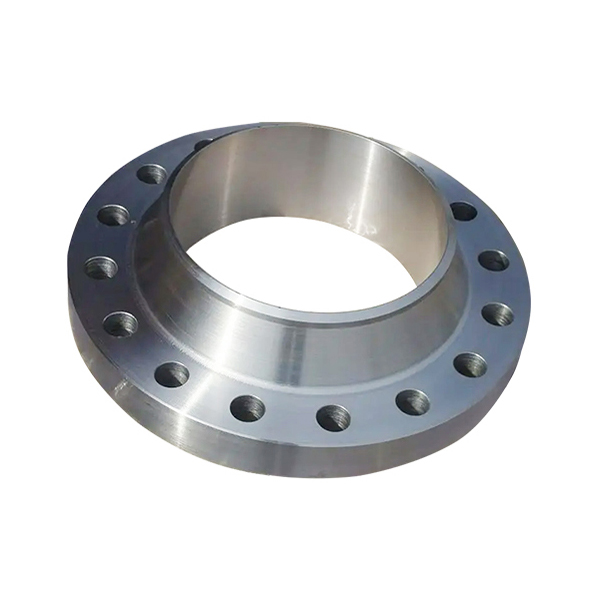
Here’s a comprehensive table summarizing some key features and specifications of ASME flanges. Please note that ASME flanges come in various types and specifications, and the details may vary depending on the specific application and ASME standard being followed.
| Feature/Specification | Description |
|---|---|
| Model/Standard | The model or ASME standard for the flange (e.g., ASME B16.5 or ASME B16.47). |
| Type | ASME flanges can be categorized into different types, including Weld Neck, Blind, Threaded, Slip-On, and more. |
| Pressure Rating | ASME flanges are classified into various pressure ratings, such as 150, 300, 600, 900, 1500, 2500, etc., based on their pressure-bearing capacity. |
| Size Range | The size range of ASME flanges, typically from 1/2 inches to 48 inches or larger, to accommodate various pipe and equipment sizes. |
| Manufacturing Process | The manufacturing process for ASME flanges, including raw material procurement, cutting, forging, machining, heat treatment, inspection, etc. |
| Material | ASME flanges are typically made from various materials such as carbon steel, stainless steel, alloy steel, etc., chosen based on application requirements. |
| Connection Method | ASME flanges are usually connected using bolts and nuts; the connection method depends on the flange type and pressure rating. |
| Application Areas | ASME flanges find widespread use in connecting pipe systems, valves, pumps, pressure vessels, and various industrial equipment, ensuring their sealing performance. |
| Facing Type | ASME flanges may have different facing types, including flat face, raised face, and ring-type joint, which affect the sealing method. |
| Bolt Hole Quantity and Diameter | The number and diameter of bolt holes in ASME flanges vary according to their size and pressure class, facilitating flange connection. |
| Accessories and Attachments | Some applications may require additional components such as flange gaskets, bolts, nuts, flange covers, or flange cover gaskets. |
| Inspection and Testing | ASME flanges typically undergo a series of inspections and tests to ensure they meet quality and performance requirements, in compliance with standards. |
| Marking and Certification | ASME flanges should be marked with the manufacturer’s identification, model, class, material, and other relevant information. Specific certifications may be required. |
| Installation and Maintenance | Proper installation and regular maintenance of ASME flanges, including bolt torque, flange face cleaning, and lubrication, are crucial for system integrity and performance. |
| Application Standards | In specific industries and applications, there may be industry-specific ASME flange application standards that need to be followed to ensure safety and performance. |
This table provides a general overview of ASME flanges, covering key features, specifications, and additional considerations. Specific details and specifications may vary depending on the particular project’s requirements and the ASME standard being applied.
II. What are AMSE flanges?
A. Definition of AMSE flanges
“ASME flange” refers to a flange that conforms to the flange standards established by the American Society of Mechanical Engineers (ASME). ASME flanges are standard components used to connect pipes, valves, and equipment in various industrial applications involving high pressure, high temperature, and high corrosive environments. These flanges are manufactured in accordance with the ASME B16.5 and ASME B16.47 standards and are classified into different grades and types to suit different application requirements. ASME flanges are typically made of metals such as carbon steel, stainless steel, or alloy steel, and are equipped with sealing gaskets to ensure the tightness of the connection.
B. Characteristics of AMSE flanges
The characteristics of ASME flanges include:
- Standardization: ASME flanges are manufactured in accordance with established standards, which ensures consistency and interchangeability between different components.
- Versatility: ASME flanges are available in a variety of sizes, types, and grades to meet different application requirements.
- Strength and Durability: ASME flanges are designed to withstand high pressures, high temperatures, and harsh environments, making them suitable for use in a wide range of industrial applications.
- Tightness: ASME flanges are equipped with sealing gaskets, which ensure the tightness of the connection and prevent leakage.
- Ease of installation: ASME flanges are relatively easy to install and can be quickly and easily assembled and disassembled.
- Corrosion Resistance: ASME flanges are typically made of metals that are resistant to corrosion, which enhances their longevity and reliability.
Overall, the characteristics of ASME flanges make them a popular choice for industrial applications that require high-performance and reliable connections.
C. Types of AMSE flanges
There are several types of ASME flanges, including:
- Weld Neck Flanges: These flanges are designed to be welded to the end of a pipe or fitting, providing a strong and permanent connection. They are commonly used in high-pressure and high-temperature applications.
- Slip-On Flanges: These flanges slide onto the end of a pipe or fitting and are then welded in place. They are relatively easy to install and are suitable for low-pressure applications.
- Blind Flanges: These flanges are used to close the end of a pipe or fitting, preventing the flow of fluids. They are commonly used in systems where periodic maintenance or inspection is required.
- Lap Joint Flanges: These flanges are designed to be used in conjunction with a lap joint stub end. They are commonly used in systems where frequent dismantling is required.
- Threaded Flanges: These flanges have internal threads that allow them to be screwed onto the end of a pipe or fitting. They are commonly used in low-pressure and non-critical applications.
- Socket Weld Flanges: These flanges are similar to slip-on flanges but have a socket that is welded to the end of the pipe or fitting. They are commonly used in high-pressure and high-temperature applications.
The choice of ASME flange type depends on the specific application requirements, such as pressure, temperature, and corrosion resistance.
III. ASME Flange Standards
ASME B16.5 and ASME B16.47 are two important standards for ASME flanges.
ASME B16.5 is the most widely used standard for ASME flanges, covering flanges with nominal sizes ranging from 1/2 inch to 24 inches. This standard specifies dimensions, tolerances, materials, marking, and testing requirements for ASME flanges.
ASME B16.47 is a standard that covers large-diameter flanges with nominal sizes ranging from 26 inches to 60 inches. This standard is divided into two parts: ASME B16.47 Series A and ASME B16.47 Series B. Series A flanges have smaller bolt holes and a larger raised face than Series B flanges.
ASME flanges are classified based on their pressure rating, which is expressed as a class number. The pressure rating determines the maximum pressure that the flange can withstand at a specific temperature. The most common ASME flange classes are Class 150, Class 300, Class 600, and Class 900.
Class 150 flanges are designed to withstand a maximum pressure of 285 psi at ambient temperatures. Class 300 flanges are designed to withstand a maximum pressure of 740 psi at ambient temperatures. Class 600 flanges are designed to withstand a maximum pressure of 1480 psi at ambient temperatures. Class 900 flanges are designed to withstand a maximum pressure of 2220 psi at ambient temperatures.
The differences between these classes of flanges lie in their thickness, number of bolts, and size of bolts. As the pressure rating increases, the thickness of the flange and the size of the bolts also increase. Class 150 and Class 300 flanges typically have four bolts, while Class 600 and Class 900 flanges have eight bolts. The size of the bolts also increases with the pressure rating.
In summary, ASME B16.5 and ASME B16.47 are important standards for ASME flanges, and the pressure rating determines the maximum pressure that the flange can withstand. Class 150, Class 300, Class 600, and Class 900 are the most common ASME flange classes, and their differences lie in their thickness, number of bolts, and size of bolts.
IV. Advantages of using AMSE flanges
These are some potential advantages of using ASME flanges in various industrial applications:
A. Compatibility with various industrial applications: ASME flanges are designed to be compatible with a wide range of industrial applications, including oil and gas, chemical processing, and power generation. They are available in various materials such as carbon steel, stainless steel, and alloy steel to meet specific application requirements.
B. High-quality standards: ASME flanges are manufactured according to strict quality standards, ensuring consistent and reliable performance. These standards include dimensions, tolerances, materials, marking, and testing requirements specified in ASME B16.5 and ASME B16.47 standards.
C. Durability and reliability: ASME flanges are designed to withstand high pressures and temperatures, making them suitable for critical applications. They are also resistant to corrosion, erosion, and other forms of wear and tear, ensuring long-term durability and reliability.
D. Ease of installation and maintenance: ASME flanges are relatively easy to install and maintain, especially compared to other types of pipe connections. They can be easily connected or disconnected as needed for inspection, repair, or replacement.
Overall, ASME flanges offer a number of advantages for industrial applications, including compatibility, high-quality standards, durability, reliability, and ease of installation and maintenance. These benefits make them a popular choice for a wide range of industries that require secure and reliable piping connections.
V. Materials Used for ASME Flanges
ASME flanges are available in a range of materials, including carbon steel, stainless steel, and alloy steel, among others. The choice of material for a specific application depends on several factors, including the operating conditions, the corrosiveness of the medium being transported, and the required mechanical properties.
Carbon steel is the most commonly used material for ASME flanges because it is relatively inexpensive and has good mechanical properties, such as high tensile strength and hardness. However, carbon steel is not suitable for use in highly corrosive environments or in applications where elevated temperatures are expected.
Stainless steel is a popular material for ASME flanges in applications where corrosion resistance is critical. It has excellent resistance to a wide range of corrosive media and is also able to withstand high temperatures. Stainless steel is available in several grades, each with different properties suitable for different applications.
Alloy steel is a type of steel that contains additional elements such as nickel, chromium, and molybdenum, which improve its mechanical properties, such as corrosion resistance, high-temperature strength, and toughness. Alloy steel is used in applications where high strength and resistance to corrosion or abrasion are required.
Other materials used for ASME flanges include copper, brass, and titanium. Copper and brass are used in applications where good thermal conductivity and corrosion resistance are important, such as in refrigeration systems. Titanium is used in applications where high strength and corrosion resistance are required, such as in the aerospace industry.
In summary, the choice of material for ASME flanges depends on the specific requirements of the application. Carbon steel is commonly used for its good mechanical properties, while stainless steel and alloy steel are used in applications where corrosion resistance and high-temperature strength are required. Other materials such as copper, brass, and titanium are used in specialized applications where specific properties are required.
VI. Installation and Maintenance of ASME Flanges
Here are the steps for correctly installing ASME flanges:
- Cleaning: Before installation, ensure that the flange face and the pipe end surface are clean to ensure sealing.
- Aligning the flange: Align the flange to the pipe end, and install the bolts into the flange. During installation, ensure that the flange is properly aligned and gently tighten the bolts to allow for adjustment of the flange position.
- Checking flange sealing: After all, bolts are installed and gently tightened, check the flange sealing. You can use a listening device or apply soap and water to check the sealing of the flange. If there is any leakage, release the bolts and readjust the position of the flange, then check the sealing again.
- Final tightening: Finally tighten all bolts to ensure the sealing and stability of the flange.
Here are the steps for correctly maintaining ASME flanges:
- Regular inspection: Regularly inspect the sealing and stability of the flange to ensure that there are no problems during use. It is recommended to check at least once a year.
- Cleaning: Regularly clean the flange face and the pipe end surface to ensure that there are no debris or corrosive materials to maintain the sealing.
- Replacing sealing material: If leakage or damage to the sealing material is found, it is recommended to replace the sealing material in a timely manner to ensure the sealing of the flange.
Proper maintenance is essential to ensure the service life and reliability of ASME flanges. Improper installation or maintenance of ASME flanges can cause leakage, loss of sealing, and other safety issues. Therefore, maintenance steps such as regular inspection, cleaning, and replacement of sealing materials are crucial to ensure the long-term service life and reliability of ASME flanges.
VII. Applications of AMSE flanges
A. Oil and gas industry:
ASME flanges are commonly used in the oil and gas industry for pipeline connections, valve connections, and other equipment connections. They are used for high-pressure and high-temperature applications and are crucial to ensure safe and reliable operations.
B. Chemical industry:
ASME flanges are widely used in the chemical industry for connecting pipelines, reactors, and other equipment. The chemical industry involves various corrosive chemicals, and ASME flanges made of suitable materials, such as stainless steel or alloy steel, can withstand the harsh chemical environment.
C. Water treatment industry:
ASME flanges are used in the water treatment industry for connecting pipelines and equipment, such as pumps, valves, and filters. ASME flanges made of suitable materials, such as carbon steel or stainless steel, can withstand harsh conditions in water treatment facilities and ensure safe and reliable operations.
D. Power generation industry:
ASME flanges are widely used in the power generation industry for connecting pipelines, valves, turbines, and other equipment. ASME flanges made of suitable materials, such as alloy steel or stainless steel, can withstand high temperature and pressure conditions and ensure safe and reliable operations.
In summary, ASME flanges have a wide range of applications in different industries, including oil and gas, chemical, water treatment, and power generation. They play a crucial role in ensuring safe and reliable operations in various high-pressure and high-temperature applications.
VIII. How to choose the right AMSE flange
A. Considerations for selecting an AMSE flange
- Pressure ratings: ASME flanges are designed and manufactured with specific pressure ratings, which indicate the maximum pressure that the flange can withstand. It is important to select a flange with a pressure rating that matches the application’s requirements to ensure safe and reliable operations.
- Temperature range: ASME flanges are designed and manufactured to withstand specific temperature ranges. It is important to select a flange that can withstand the temperature of the fluid or gas being transported to ensure safe and reliable operations.
- Material compatibility: ASME flanges are available in a variety of materials, such as carbon steel, stainless steel, and alloy steel. It is important to select a flange made of a material that is compatible with the fluid or gas being transported to avoid corrosion and other compatibility issues.
- Type of connection: ASME flanges are available in different types of connections, such as weld neck, slip-on, blind, lap joint, threaded, and socket weld. The type of connection depends on the application’s requirements, and it is important to select the appropriate type of connection to ensure safe and reliable operations.
In summary, selecting the right ASME flange requires consideration of pressure ratings, temperature range, material compatibility, and type of connection. It is important to choose a flange that matches the application’s requirements to ensure safe and reliable operations.
B. Steps to follow when selecting an AMSE flange
- Determine the system requirements: The first step is to identify the system requirements, such as the fluid or gas being transported, the temperature and pressure requirements, and the type of piping system. This information will help determine the appropriate flange type, size, and material.
- Choose the appropriate flange type: ASME flanges are available in various types, such as weld neck, slip-on, blind, lap joint, threaded, and socket weld. The type of flange you choose will depend on the application’s requirements, such as the pressure rating, temperature range, and type of connection.
- Select the appropriate size and pressure rating: The size and pressure rating of the ASME flange should match the system requirements. The size is typically determined by the diameter of the pipe, while the pressure rating is determined by the maximum pressure the flange can withstand.
- Choose the right material: ASME flanges are available in different materials, such as carbon steel, stainless steel, and alloy steel. The material you choose should be compatible with the fluid or gas being transported to avoid corrosion and other compatibility issues.
In summary, selecting the right ASME flange requires determining the system requirements, choosing the appropriate flange type, selecting the appropriate size and pressure rating, and choosing the right material. By following these steps, you can ensure that you choose a flange that meets the application’s requirements and ensures safe and reliable operations.
IX. Conclusion
In conclusion, ASME flanges play a critical role in various industrial applications. They offer many advantages, such as compatibility with different materials, high-quality standards, durability and reliability, and ease of installation and maintenance. It’s important to carefully select the appropriate ASME flange based on the system requirements, flange type, size and pressure rating, and material compatibility.
When selecting an ASME flange, consider the pressure rating, temperature range, material compatibility, and type of connection to ensure a safe and reliable operation. With the right ASME flange in place, you can ensure that your system operates efficiently and effectively.
If you need more information about ASME flanges, it’s recommended to contact reputable ASME flange manufacturers. They can provide you with additional information about the different types of ASME flanges, materials, and other factors to consider during the selection process. By working with a reliable manufacturer, you can ensure that you choose the right ASME flange for your specific needs.
Lewis Liu
Hello, I am Lewis Liu, a professional sales engineer with over ten years of experience in the flange fittings industry. I am highly knowledgeable in flange selection, installation, and maintenance. I am passionate about providing customers with the best solutions to ensure their pipeline systems run smoothly, safely, and reliably.
If you have any questions or concerns regarding flange fittings for your pipelines, whether it’s about selection, material choice, specification requirements, or any other aspect, please feel free to contact me at any time. I am committed to offering professional advice and assistance to help you make informed decisions and meet your needs.

